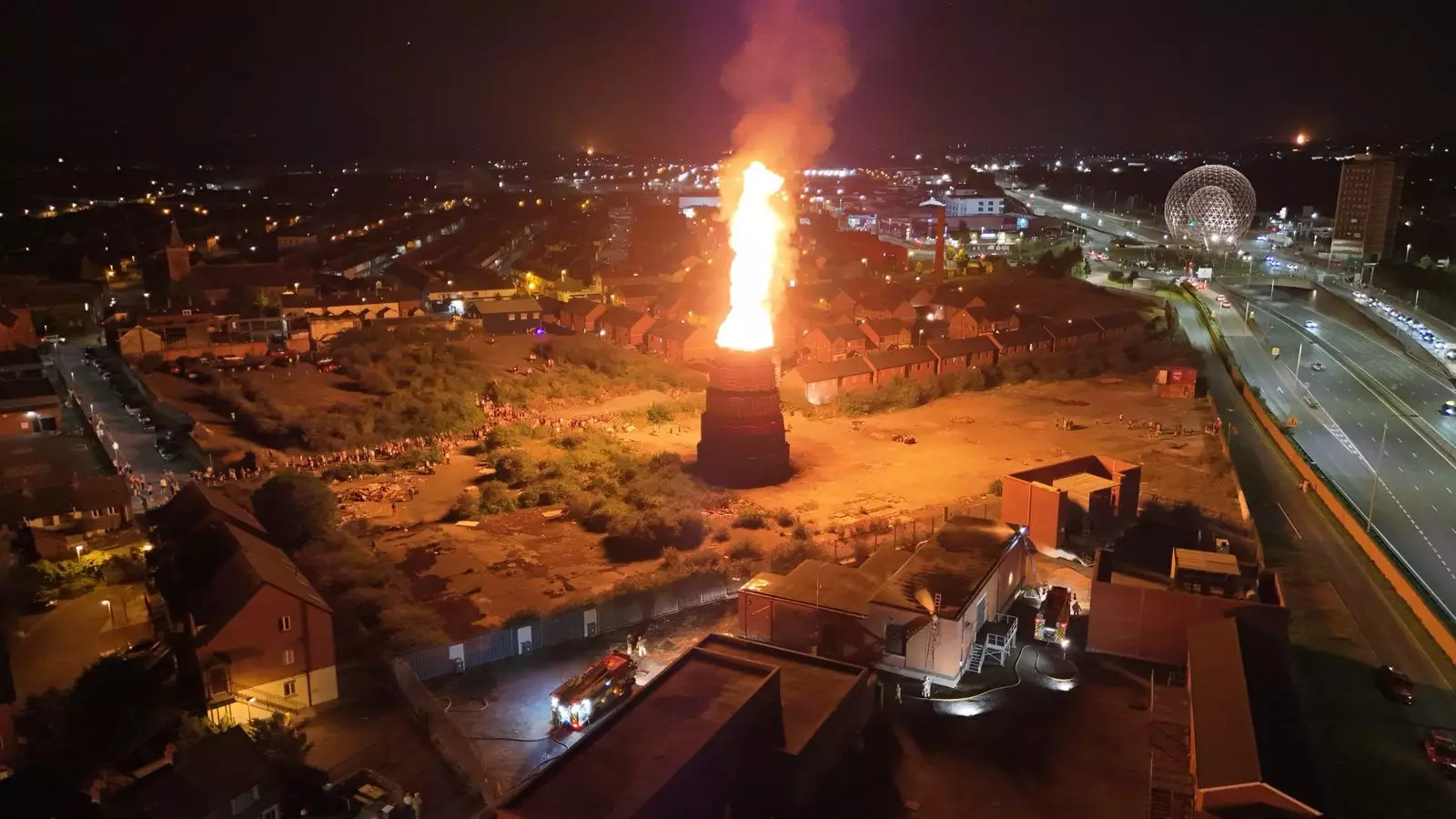The annual bonfire festivities in Northern Ireland, particularly around the 12th of July, are often portrayed as cultural tradition, but beneath this veneer lies a complex tapestry of politics, identity, and ongoing division. These gatherings, celebrated with flares of fire and sometimes incendiary displays, serve as a vivid reminder of unresolved conflicts. While many view these events as harmless cultural expressions, the truth is that they often deepen communal divides and foster environments that can be both dangerous and provocative. The fact that these bonfires are set ahead of politically charged Orange Order parades underscores their role as symbols of protest and allegiance, often at the expense of community safety and harmony.
This tradition’s deep historical roots cannot be ignored, but neither can its adverse implications. These fires are more than just symbolic markers; they are natural battlegrounds for identity and resistance. The provocative effigies, incendiary slogans, and occasionally controversial displays can quickly spiral into acts that threaten social cohesion, promote hostility, and undermine community relations. To dismiss these as benign is naïve; it neglects their power to ignite tensions and perpetuate cycles of conflict.
Legal and Environmental Chaos
Despite widespread warnings and legal challenges, the sporadic yet powerful lighting of bonfires continues to challenge authority and environmental safety alike. One particularly alarming incident involved a bonfire built on a site contaminated with asbestos—an act that exposes individuals and communities to significant health risks. The decision to burn on sensitive sites like this symbolizes a blatant disregard for both public health and environmental regulations, revealing a troubling normalization of reckless behavior in the name of tradition.
The response from officials highlights the gravity of these incidents. Environmental agencies and authorities have launched investigations, emphasizing that these acts constitute more than just cultural displays—they threaten public safety and safety protocols. The government’s acknowledgment of such risks, coupled with urgent calls for removal and risk mitigation, underscores a growing awareness that the costs of these events extend far beyond their cultural merits. Yet, the persistence of these fires signals a broader cultural resistance to change, an unwillingness to confront the hazards they pose.
Indignity and Provocation in Celebrations
The spectacle of effigies and provocative imagery during these events raises troubling questions about societal values and respect for diversity. Effigies of political figures, factions, or even controversial groups are often burned amid chants and slogans that inflame tensions. For instance, effigies depicting political opponents or symbols related to anti-government sentiments are not uncommon, making these bonfires a venue for political expression that often crosses the line into hostility.
Particularly concerning are instances where the imagery or rhetoric targets marginalized groups or exacerbates social divisions. The burning of an effigy related to migrants in a boat, for example, reveals a potent mix of xenophobia and insensitivity that tarnishes the region’s reputation as a place of tolerance. Such acts may be rooted in historical grievances, but their recurrence signals a profound refusal to foster an inclusive, peaceful community. They serve only to alienate and marginalize, undermining efforts towards reconciliation and equality.
The Political and Social Consequences
The ongoing cycle of bonfires and parades challenges the pursuit of mutual understanding and coexistence. The Parades Commission’s designation of certain routes as “sensitive” highlights an awareness of the potential for violence or unrest. Over 4,000 police officers are deployed annually to manage these events, a costly and tense effort that underscores the fragile peace in the region.
Moreover, the political landscape remains deeply intertwined with these festivities. Leaders often use these events as barometers of stability, but few have demonstrated a genuine willingness to challenge the tradition when its harm outweighs its cultural significance. Instead, many accept the status quo, viewing the fires and protests as unavoidable symbols of identity. This complacency emboldens a cycle where communities are divided by spectacle, flames, and defiant displays rather than seeking genuine reconciliation and understanding.
The glaring paradox is that in celebrating heritage, a segment of society inadvertently fuels division and conflict. Their proud display of history, identity, and allegiance often comes at the expense of progress towards peaceful coexistence in Northern Ireland. Ultimately, these bonfires are less about tradition and more about maintaining a status quo rooted in resistance—resistance to change, inclusion, and reconciliation.


Leave a Reply